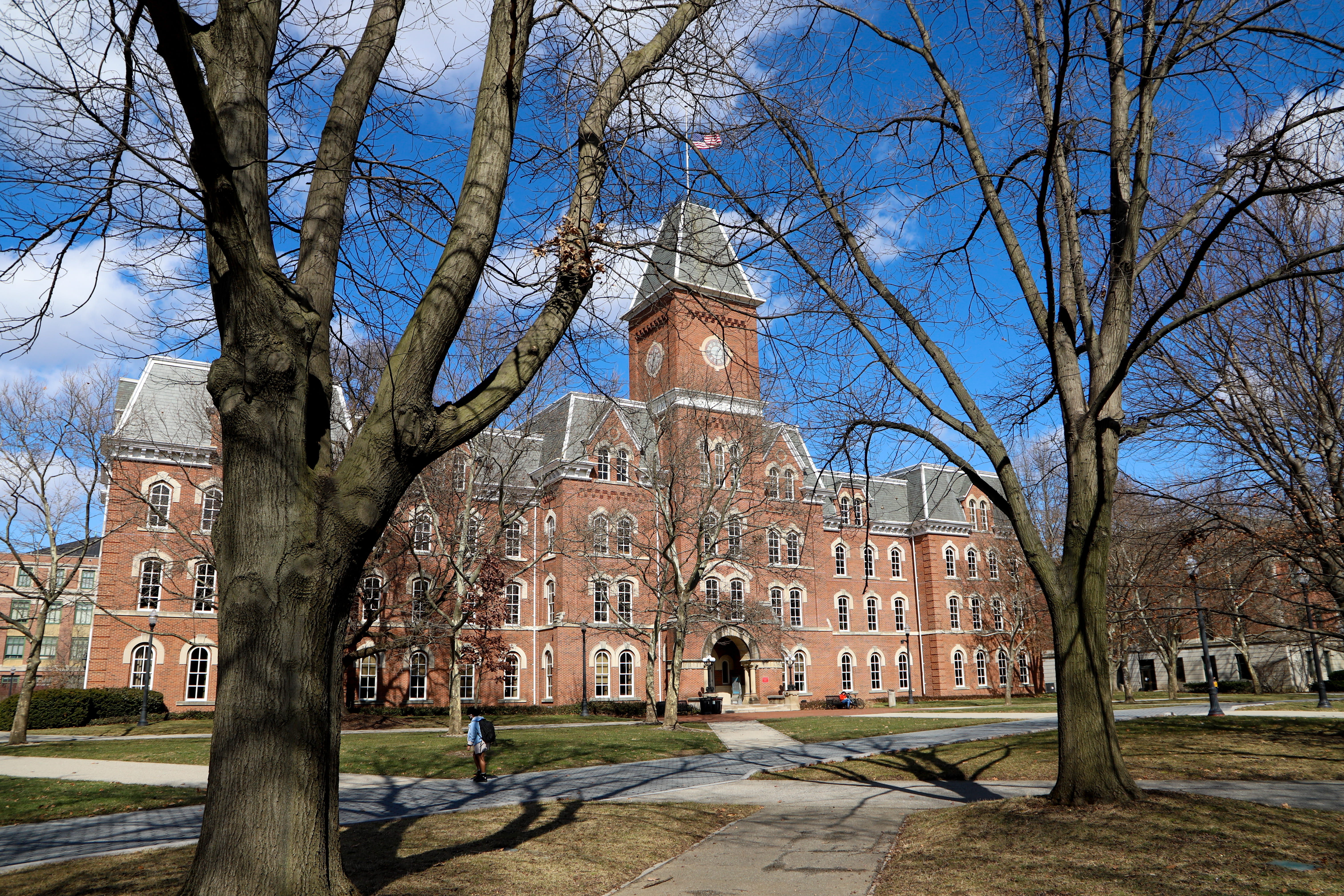
Since its formation 50 years ago, Ohio State’s Department of African American and African Studies has seen highs and lows but recently, its faculty says they’ve seen more lows than highs. Credit: Mackenzie Shanklin | Photo Editor
Since its formation 50 years ago, Ohio State’s Department of African American and African Studies has seen highs and lows, but recently, its faculty says they’ve seen more of the latter.
Although the number of students enrolled in the major increased slightly over the past five academic years, the number of credit hours taken has decreased nearly 30 percent and instructional staff is less than half of what it was, according to department records.
“When I came here in 2010, I would say we were at least three or maybe four times as large as we are currently,” Ryan Skinner, director of undergraduate studies in the department, said. “We used to have department faculty retreats and a community extension center and fill the big conference room.”
The field primarily teaches and researches the Black experience in the United States, Africa and throughout the African Diaspora and encourages students to assess various strategies for promoting human progress by exploring the global struggle for Black freedom, according to the department website.
In the 2016-17 academic year, the department housed 27.6 instructors — calculated using the number of full-time faculty and the full-time equivalence of part-time instructors — made up of tenure-track faculty, associated faculty and graduate teaching assistants.
This year, there are 10.8 instructors. The largest drop occurred in tenure-track faculty, decreasing from 15.7 to just six in the past five years. The number of associated faculty dropped from 7.4 to 1.3, partially caused by African language programs being moved from the department to the Center for Languages, Literatures and Cultures in the spring of 2018.
Retired faculty, in-demand staff, appointment shifts and hiring freezes are also among the reasons for the staff loss, Skinner said. He said in order to sustain the work the department is doing, it’s looking to double its faculty in the next five years.
Kevin Leonardi, senior director of marketing and communications for the College of Arts and Sciences, said in an email that the university is looking to advance the department through future initiatives.
“As we recover from the impacts of the pandemic, hiring and investing in faculty will be a priority for Arts and Sciences, and will be accelerated by strategic university initiatives, such as RAISE,” Leonardi said. “We expect this to have a positive impact on departments across the college, including AAAS.”
RAISE — the Race, Inclusion and Social Equity initiative — is meant to hire 150 diverse tenure-track faculty in the coming years and is part of University President Kristina M. Johnson’s plan to add 350 tenure-track faculty to the university.
At least 50 hires will be scientists, artists and scholars working to address social equity and racial disparities in areas such as health care, education, justice and public safety, Johnson said in her State of the University address Feb. 18. One hundred positions are slotted specifically for Black, Indigenous and other people of color in all scholarship fields.
University spokesperson Ben Johnson said in an email the university is committed to partnering with the College of Arts and Sciences in implementing the RAISE initiative.
“Ohio State believes strongly in the educational mission of the Department of African American and African Studies, and the university is committed to supporting the department’s faculty and their work,” Johnson said.
Adélékè Adéẹ̀kọ́, the department’s interim chair, said in addition to increasing faculty, he wants enrollment to pick up.
Students were enrolled in 2,655 credit hours within AAAS in Spring 2017; this semester students are enrolled in 1,749. However, Leonardi said the African language courses moving out of the department in 2018 accounted for 800-1,000 credit hours per semester — nearly the size of that difference.
Adéẹ̀kọ́ said future growth of the department is more important than ever in the current social climate.
“In the future, I want to see more enrollment and more students getting interested in taking classes in African American Studies, especially given the times we live in today,” Adéẹ̀kọ́ said. “Our faculty would love to have more colleagues, and I want the university to put more money in the department.”
Still, reaching this point and even establishing the department — formerly known as the Black Studies Department — was no easy feat, Judson Jeffries, professor in the department and editor of research journal “Spectrum: A Journal on Black Men,” said. He said in the late 1960s, students organized “some of the most significant” protests, marches, rallies, teach-ins and other political demonstrations to bring the department to campus.
“People were upset that they were being taught a curriculum that was not an accurate reflection of the melting pot that is the United States of America, especially Black students,” Jeffries said. “Much of what they learned in class had very little to do with the lived experiences of people of African descent.”
Jeffries said the department is in the worst shape he’s seen, and he wants the university to actively support the department in order to serve students.
“If you are allowing other academic users to hire folk, then it would seem to me that the department of African American and African Studies would be prioritized, given the illustrious history,” Jeffries said.


